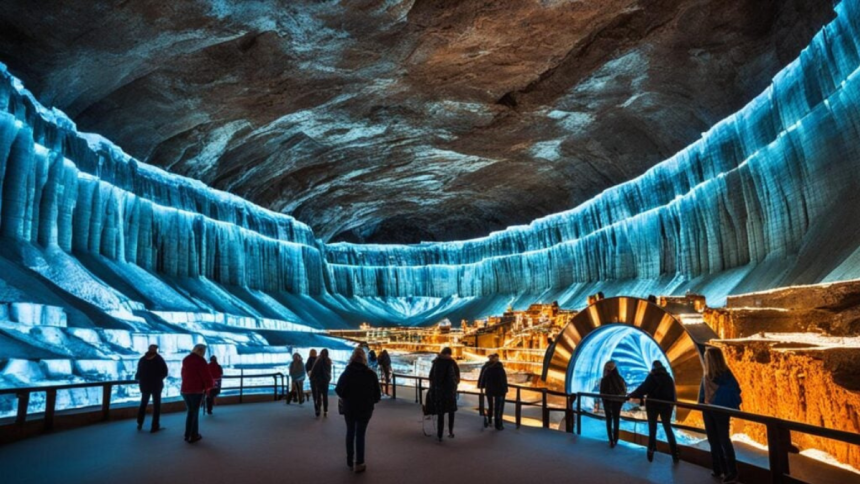Visiting salt mines offers more than just a glimpse into history; it provides an unexpected pathway to improved mental health. These underground sites, rich with centuries-old stories and survivor memories, create immersive experiences that can foster reflection, resilience, and emotional healing. Exploring historical salt mines connects visitors to narratives of survival, helping to alleviate stress and promote mental well-being through engagement with the past.
Salt mines, like the famous Wieliczka Salt Mine in Poland, are not only cultural landmarks but also places where the therapeutic properties of the environment have been noted for generations. The quiet, controlled atmosphere combined with the weight of history encourages mindfulness and calm. Booking a visit through Krakow Booking ensures convenient access to this unique destination, as well as to nearby historical sites such as the Oskar Schindler Enamel Factory, deepening one’s understanding of human endurance and collective memory.
The blend of natural healing factors within the mines and the compelling survivor stories encountered during these visits offers a rare combination of wellness and education. This unique form of historical tourism allows people to connect with both their own emotions and the resilience of others, making it a meaningful experience beyond conventional sightseeing.
Salt Mines as Historical Sites and Centers for Transformation
Salt mines have served multiple purposes across centuries, from resource extraction to centers of healing and personal change. Their unique environments have influenced the development of salt therapy, preserved survivor histories, and evolved into prominent tourist destinations that blend education with wellness.
Wieliczka Salt Mine and the Birth of Salt Therapy
The Wieliczka Salt Mine near Krakow is one of the oldest and most famous salt mines in the world. Beyond its historical significance, it was central to early medical research on salt’s health benefits. Dr. Feliks Boczkowski, a pioneer in the 19th century, studied how the mine’s microclimate could aid respiratory conditions.
This led to the establishment of salt therapy facilities within the mine’s chambers, creating an early form of speleotherapy. Visitors could experience this natural spa environment that combines clean, mineral-rich air with a cool, stable climate. Today, many continue to visit for both its history and therapeutic effects, with tours available from Krakow offering direct access to this legacy.
Eastern European Origins and Expansion of Salt Healing
Salt therapy has deep roots in Eastern Europe. Early balneology institutes, including those around the Solotvyno salt mine area, formalized health treatments based on the inhalation of salt particles. These treatments were aimed at chronic lung diseases and other respiratory ailments.
Facilities often replicated the natural salt mine environment on the surface to make therapy more accessible. As scientific understanding grew, salt healing expanded beyond local use, influencing spa traditions across the continent. The Institute of Balneology played a key role in studying and promoting salt’s therapeutic value during the 20th century.
Survivor Stories and Life Underground
Salt mines hold significant survivor stories that reflect human endurance and transformation. Throughout history, these mines were not only places to extract salt but also prisons and shelters during times of conflict and slavery. Many who lived or worked underground developed close-knit communities shaped by hardship.
These stories are preserved in museums and oral histories, offering insight into the mental resilience and adaptability of those who survived harsh underground conditions. The emotional weight carried by the mines adds a layer of meaning for visitors beyond the physical space, connecting past sufferings to personal and collective strength.
Salt Mines in Modern Tourism
Today, salt mines are major historic and wellness tourist attractions. Sites like the Wieliczka Salt Mine blend cultural heritage with health tourism, drawing thousands annually. Visitors explore intricate salt chambers, chapels, and sculptures while learning about mining history.
Modern tours often include visits to salt therapy rooms, combining education with the benefits of speleotherapy. For those interested, booking a guided Wieliczka Salt Mine Tour offers structured access to these experiences, highlighting the ongoing transformation of salt mines into multifaceted centers of history and healing.
Unexpected Mental Health and Wellness Benefits from Visiting Salt Mines
Visiting salt mines offers more than historical insight; it exposes individuals to a carefully balanced microclimate rich in salt-infused air. This environment can impact respiratory and skin health positively while providing a distinctive setting for relaxation and stress reduction.
Salt Therapy’s Evolution from Subterranean Healing to Halotherapy
Salt therapy began as miners noticed improved health outcomes in natural salt caves, inspiring deeper study into the benefits of these unique subterranean environments. Over time, this led to the development of halotherapy, a modern wellness practice that recreates salt mine conditions within specialized salt therapy facilities.
Halotherapy uses dry salt aerosol released in salt rooms or salt chambers to mimic the natural microclimate found in salt caves. Originating from practices such as the Skulimowski method and principles observed by Dr. K.H. Spannahel, halotherapy targets respiratory and skin conditions by encouraging inhalation of salt particles.
Today, both natural and artificial salt caves serve as controlled settings for this alternative treatment, sometimes called speleotherapy or subterraneotherapy. Advances in halotechnology enable precise control of salt aerosol concentration, making salt rooms accessible to those unable to visit actual salt mines.
Respiratory and Skin Health Improvements in Salt-Enriched Environments
The saline air inside salt caves and therapy rooms contains micro-minerals like magnesium, calcium, and potassium, which benefit respiratory health. People with asthma, bronchitis, sinusitis, and allergies often report reduced symptoms after exposure to salt-infused air. The salt aerosol helps clear mucus, reduce inflammation, and improve lung function.
Salt therapy’s impact extends to skin health. Conditions such as eczema, psoriasis, and acne may improve as the salty microclimate reduces irritation and promotes healing. Salt baths complement this effect by delivering minerals directly to the skin.
Research supports using salt rooms as secondary treatments—not cures—often enhancing the effectiveness of conventional care. These environments may also boost immunity due to the natural antiseptic properties of salt.
Relaxation, Stress Relief, and the Microclimate Experience
The unique atmosphere of salt mines and salt therapy facilities promotes relaxation through a combination of clean air, low allergens, and gentle microclimate factors such as humidity and temperature. Visitors often experience stress reduction, improved mood, and better sleep quality when spending time in salt rooms or natural salt caves.
This calming effect is partly due to the absence of pollutants and the presence of negatively charged ions from salt particles, which may influence brain chemistry. Many salt therapy centers integrate quiet spaces, subdued lighting, and therapeutic environments to enhance mental wellness.
To experience the benefits of a real salt mine environment, consider booking a guided tour through Krakow Booking. For those interested in cultural attractions, you can also visit Schindler’s Factory with a skip-the-line ticket.
Lynn Martelli is an editor at Readability. She received her MFA in Creative Writing from Antioch University and has worked as an editor for over 10 years. Lynn has edited a wide variety of books, including fiction, non-fiction, memoirs, and more. In her free time, Lynn enjoys reading, writing, and spending time with her family and friends.















